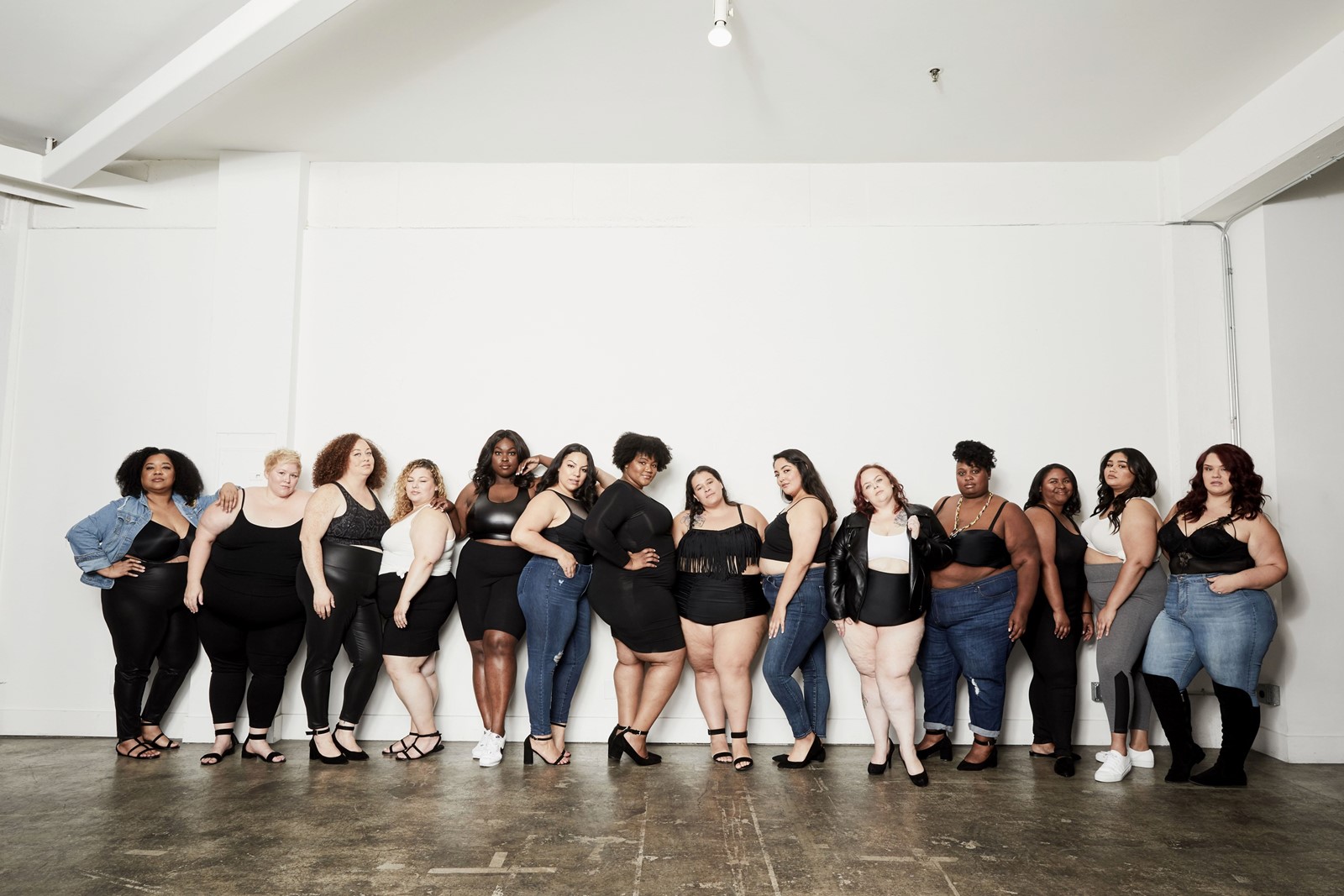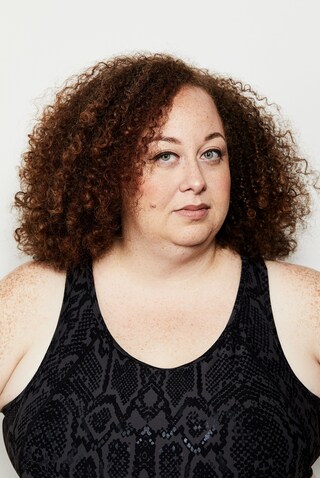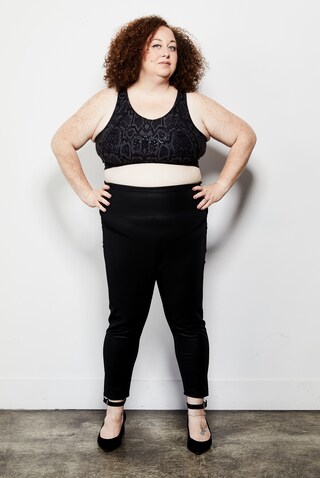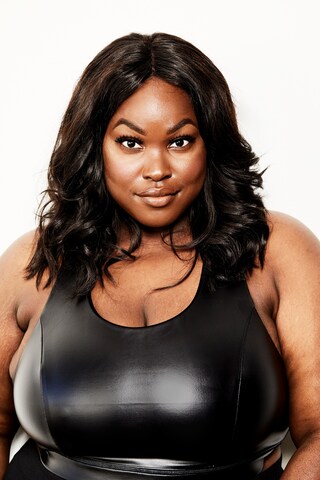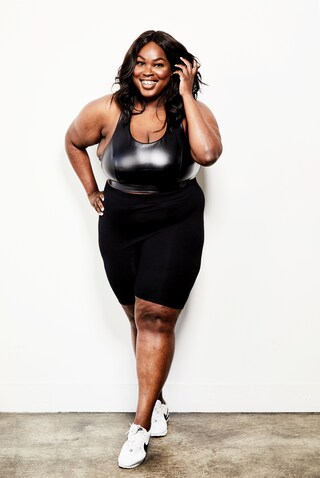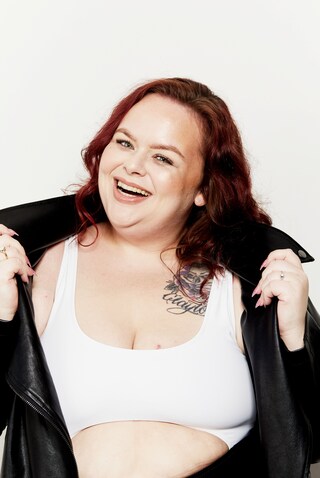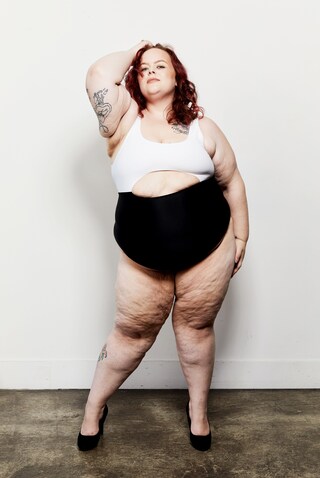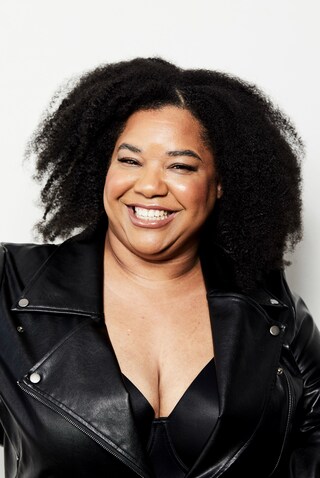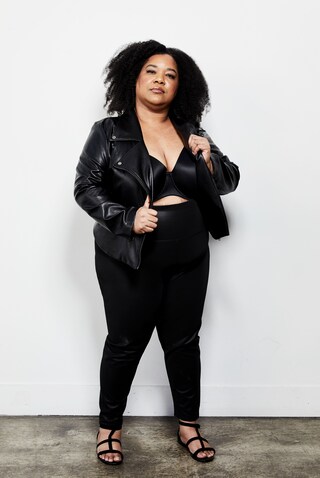Four women signed to the US brand’s inclusive new agency share their modelling journey so far, how they’re navigating being plus-size, and slowly redefining the fashion industry
Nearly 70 per cent of women in America are estimated to be plus-size. But plus-size bodies certainly don’t make up 70 per cent of the imagery we consume in mainstream American (or British) media, even in this age of “body positivity.” As a fat woman, and former fat kid, it’s nothing short of overwhelming to turn on the telly or flick through the pages of a legacy publication only to see myself reflected back. But these moments are actually still pretty rare.
For Lauren Haber Jonas, founder and CEO of plus-size brand Part & Parcel, the current level of representation isn’t enough. “A perfect hourglass-shaped, size 16 woman is beautiful and should be celebrated – but what about the size 16, or 24, or 36 woman that’s not perfectly hourglass-shaped? She deserves to see herself reflected in the world too,” she says. To create more visibility and economic opportunities for plus-size women, Jonas has now launched her own plus-inclusive modelling agency, Talent.
“The inspiration for Talent came out of our own challenges as a brand finding models to showcase our collections,” she says. “We make products up to size US 36 (UK 40), whereas most plus brands only serve up to size 20 (UK 24). Because of this, agencies don’t sign women upwards of a size 22 (UK 26) so we started asking women from our community to model for us, and this beautiful, organic thing happened. We were showcasing so many gorgeous, diverse plus women – with all different backgrounds, body shapes, races and abilities – and we realised we needed to bring this visibility and representation of plus to the fashion industry at large.”
In terms of creating more professional opportunities, Jonas knows the workplace discrimination facts. Hiring managers often believe fat people to be lazier, generally poorer workers than their thin counterparts. “Plus women are more likely to get fired, are hired less, and get promoted less often in their careers,” she explains. “Bringing more opportunity to plus women is a huge focus for Part & Parcel, and with Talent, we’re opening more doors for her and paving the way for new opportunities to earn a living and ultimately, thrive.”
Talent has launched with an inaugural cast of 15 models, all of whom were scouted through Part & Parcel’s customer community. Since its introduction, over 250 additional women across 30 states in the US have sent in applications, and Jonas hopes to triple Talent’s roster by 2020. Below, Part & Parcel Talent models Akilah Biederman, Jerae Broughton, Kat Stroud, and LaKesha Phillips share what it’s like to be fat in fashion, and how they’re navigating, and redefining, being plus-size.
When and why did you begin modelling?
Kat Stroud: I started modelling after competing in the 2013 California Plus Pageant. I saw women who wanted to see bodies like theirs, owning the skin they’re in, so I began modelling with local brands. Slowly, modelling became not only my passion but my career.
LaKesha Phillips: I had no previous professional modelling experience prior to arriving on set a month ago. My own confidence, sense of value, self-worth, self-love, and self-respect needed a stern talking to and firm boost. My daughter: a beautiful plus-size teenage Nubian princess is desperately looking for herself in the brands we endorse every day. The underrepresented plus-size women in my community and the world at large need to know that their visibility is not optional, their voice matters, and their needs – in fashion or otherwise – deserve to be accommodated.
Jerae Broughton: I started modelling about five years ago for my plus-size fashion blog and Instagram Curvyology. I was scouted by one of Part & Parcel’s amazing employees, Francis Dive.
“As a petite, alternative, and plus-size model, it’s been an uphill struggle to find my place in such a straight-size dominated world... But the reality is that 80 per cent of the population has more in common with my body shape than the six-foot glamazons with hourglass bodies that we’re being force-fed by the media” – Kat Stroud
How did you connect with Part & Parcel?
Kat Stroud: I’ve been with Part & Parcel since they launched their amazing wide-calf boots on Kickstarter back in 2017. I noticed a brand that was designed for plus bodies and knew I needed to support them with all of my heart. I became one of their partners and began modelling for them, and that’s how I was signed with Part & Parcel Talent.
LaKesha Phillips: Katie Winnen, our field programs & training manager, first approached me to join Part & Parcel as a founding partner when the company launched in May 2019. Then again to be one of the inaugural 15 models for the opening campaign and launch of P&P Talent in September 2019.
Akilah Biederman: I’m a partner with Part & Parcel and was asked to be a part of this groundbreaking agency. I’ve never modelled except for my mum’s handmade dresses when I was a kid. Never in a million years would I have ever thought I was ‘good enough’ to model, but the ladies saw something in me that I’m starting to see in myself.
What has your journey been like trying to break into fashion/beauty/modelling?
Kat Stroud: As a petite, alternative, and plus-size model, it’s been an uphill struggle to find my place in such a straight-size dominated world. I was constantly told, ‘Oh – we’d love to work with you, but you need to be signed!’ Or, ‘You’re just too fat and short to be a model.’ But the reality is that 80 per cent of the population has more in common with my body shape than the six-foot glamazons with hourglass bodies that we’re being force-fed by the media.
Akilah Biederman: I’m so new that I haven’t encountered anything outside of (the difficulties) shopping and wanting to see representation of bodies that look like mine.
Jerae Broughton: When I started my blog, I wanted to create my own lane and stay as true to myself as possible. If you remember that, you can always turn a negative into a positive learning experience.
Do you think we’re in some kind of “body positive” revolution?
Kat Stroud: Mainstream media and brands are slowly coming around to the idea that people want to see fat bodies – living unapologetic and proud – because that’s real life. But plus models and influencers still aren’t getting paid what our straight-size counterparts are getting paid. We’re not getting as many opportunities as size zero models, and Part & Parcel Talent is one of the only agencies in the US signing models over size 22 that are under five feet nine inches tall. There is definitely room to do better and be better.
LaKesha Phillips: We’ve only reached the tip of the iceberg as the system of diversity on elite runways, magazine covers, commercials, movies, print ads, etc. still needs work. The attitude and energy it’ll take to challenge the idea that beauty and fashion belong to a specific group or person has yet to be channelled. We are well on our way but we must be careful not to misinterpret the progress of a trend with the staying power of change.
Akilah Biederman: The revolution is only there if you look for it. There are so many amazing ladies on Instagram living out loud and proud that make me want to be a better representation of myself but I had to go find it. For the most part in mainstream media, the ‘plus’ ladies are size 10-14, super curvy, but they still represent an unattainable goal to most women.
Jerae Broughton: Part & Parcel is making the improvement that’s needed happen. They’re increasing visibility of women of all shapes and sizes, giving them the opportunity to model for brands. It’s beautiful when people can go to a website and see someone that looks like them.
Who are some of your modelling icons? Your body-positive or fat-positive icons?
Kat Stroud: My favourite fat babes include Catherine Schuller, Erica Lauren, Marie Denee of The Curvy Fashionista, Liris Crosse, Saucye West, Ady Del Valle, Missy Elliot, Madeline Jones, Kelly Augustine, and Carina Shero. My favourite fictional characters include Ursula and Miss Piggy.
Jerae Broughton: I’m obsessed with Tyra Banks. I also loved Mo’nique – she was plus-size and so fabulous on her show The Parkers I wanted to be just like her.
LaKesha Phillips: I still love Toccara Jones from ANTM series 3, but I’m also an avid follower of so many influencers including Chastity Garner Valentine, Hayet Rida, Alexandra Thomas, Ty Alexander, Maui Bigelow, Rochelle Johnson, Nadia Aboulhosn, and Kellie Brown.
Akilah Biederman: I’m obsessed with Michelle Buteau, Jill Scott, Alexis Henry (another Ohio Lady), Jenny Han, and honestly the other ladies in Part & Parcel Talent. It isn’t easy to put all of yourself out there for everyone to consume.
Do you think the increased representation of plus-size people is still quite gendered?
Kat Stroud: We’re seeing plenty of plus women, but men and non-binary models are having to fight even harder for their space to be seen and represented. This in part has to do with toxic diet culture, where the rhetoric of ‘being thin and being a woman’ is the essential epitome of beauty.
LaKesha Phillips: As the mum of a tall, handsome, plus-size son, I can certainly see that he and those like him remain invisible. It was and still is very difficult to find clothes that fit and flatter him, both locally and online. If brands aren’t willing to move the needle on what we see in everyday fashion for men, then there will remain a gaping hole where plus-size men, men of colour, and non-binary people should stand and be included.
Akilah Biederman: It’s quite gendered simply because sex at any size sells. It’s much easier to wrap your head around a larger woman that you can still find appealing in the arena of public opinion. No one is shaming anyone for thinking that Ashley Graham is sexy.
Jerae Broughton: There are some men and non-binary people that are out there killing it, but they are very few and far between. If plus women being represented (myself included) could collaborate with men and non-binary people, it could shine a light on a broader range of diversity and create a more well-rounded group. I’m married to a big and tall man and trying to get outfit ideas for him through Instagram is sometimes nearly impossible.
How do you navigate trolls both IRL and online? What are your tips for self-care?
Kat Stroud: I’ve been a fat woman my entire life. Bullies and trolls have taken too much of my time and energy, so, when it comes to social media, I have a strict no engage, delete, and block policy. The truth is that no matter what we say or do, when someone is determined to spread hate, nothing you can say will change that. Don’t waste your precious energy on them.
When it comes to real life I have a take no BS attitude – I will stand up for myself and my right to exist in my body. These are a few of my own tips for self-care:
1. When in doubt, ask yourself who profits off of your doubt, because, if it’s not you – then it’s time to change the way you think.
2. It’s OK to have bad body image days, but realise that it’s not permanent, and the fact that your body has supported you and you are still here is something to celebrate and cherish.
3. Surround yourself with people who genuinely care about your success, and genuinely care about theirs. There’s nothing like having a community behind you, ready and willing to support you. Also, show up for others!
4. If you don’t love yourself today – that’s OK, just keep working on it because you are worth it!
5. Lastly, it’s OK to not be OK, it’s ok to have bad days, it’s ok to feel low. We all experience these feelings and you’re not alone in them.
LaKesha Phillips: Having someone you love and trust sift through your social media for trolls, blocking and deleting unsavoury banter, can be the fortress of protection that adds wealth to your mental portfolio. But given most of us don’t have a ‘team’ willing to do this just yet, I guess good old-fashioned tenacity will have to do.
Akilah Biederman: As a girl who’s always been plus, playing sports and being active, I was always my hardest critic. I’m so fortunate to have a family that has always told me that at any size I was beautiful and worthy. Not everyone has that base. Now I just have to believe it.
Jerae Broughton: I live by the motto I created, ‘Everybody has an opinion but an opinion is an option, not a fact.’ People can say what they want about me and I let it roll off my fat back. I know who I am and I will not allow someone’s opinion of me that’s based on how I look affect me.
“I live by the motto I created, ‘Everybody has an opinion but an opinion is an option, not a fact.’ People can say what they want about me and I let it roll off my fat back. I know who I am and I will not allow someone’s opinion of me that’s based on how I look affect me” – Jerae Broughton
What have been the most useful tools on your own journey to self-acceptance?
Kat Stroud: Therapy helped rewire my brain to realise that most of the hate I held for myself was created by a billion-dollar industry that profits from it. I realised it was time to let it go and appreciate my body for all that it has done for me. When I let go of the fear of how others would perceive my body, it gave me the freedom to be true to myself - and that’s truly when I feel most beautiful.
LaKesha Phillips: Acts of self-love: keeping a true inventory of my strengths and weaknesses, acknowledging (out loud) how it all feels, what I’d like to change and why and giving myself permission to intuitively see, feel, know without seeking validation from others. Remaining connected with my spirit through prayer, meditation, music, dance, reading, journaling, affirmations and nature, or just letting the sun kiss my face.
Akilah Biederman: Positive self-talk, 100 per cent. Also, putting on the clothes and walking out the door. Once you are in the world, it’s too late, it’s already done. I feel most beautiful when my little girls look at me and say, “You look pretty, momma,” and it’s usually when I’ve just woken up or am trying to get them out of the bath with my hair going in a million different ways. I also feel beautiful when I’ve got a badass red lip on.
Jerae Broughton: The most useful tool was not caring what people think of me. I march to the beat of my own drum and feel the most beautiful in different places at different times. I’m a glamour queen so either in full make-up and hair wearing something fierce, or when I’m at home lounging around with no make-up on and my hair in a bun.
What is the future of beauty, fashion, and modelling?
Kat Stroud: Change. People are pushing back against an unrealistic standard of beauty that is not one size fits all. We want to see diverse, beautiful bodies doing their thing, and slowly but surely it’s happening. I’m utterly grateful to be a small part of that change.
Akilah Biederman: I hope we continue to keep moving in this direction. That more little girls and boys see themselves represented in all forms of media. That the fashion and beauty industries make more inclusive strides in gender and race.
Jerae Broughton: With brands like Part & Parcel breaking the mould, the future seems bright for people who don’t fit into what society deems beautiful.
LaKesha Phillips: The impact of the agency has already begun – enticing brands to elevate the conversation and broaden the standards surrounding beauty and body inclusivity. I predict the biggest shift will be the return of hope in the eyes of plus-size women, men, girls, and boys. They will look up to see themselves in places that only prompt them to dream bigger, love stronger, grow taller, and fight harder for their rightful space in the world!
